Lifted trucks with high ground clearance have gained immense popularity among truck enthusiasts and off-road enthusiasts alike.
By following the guidelines on how to jack up a lifted truck, maintaining your truck properly, and taking necessary safety precautions, you can enjoy the benefits of a lifted truck while ensuring its optimal performance and your personal well-being.

Table of Contents
Different types of lift kits available
When it comes to lifting a truck, there are various types of lift kits available.
Understanding these options can help you choose the most suitable one for your needs.
The three common types of lift kits are:
- Suspension lifts
Suspension lifts involve modifying the vehicle’s suspension system, which includes replacing springs, shocks, and other components.
- Body lifts
Body lifts provide additional clearance for larger tires, but do not affect the suspension or ground clearance.
- Leveling kits
Leveling kits are used to level the front and rear ride height of the truck, as some factory models have a slight rake where the front end sits lower than the rear.
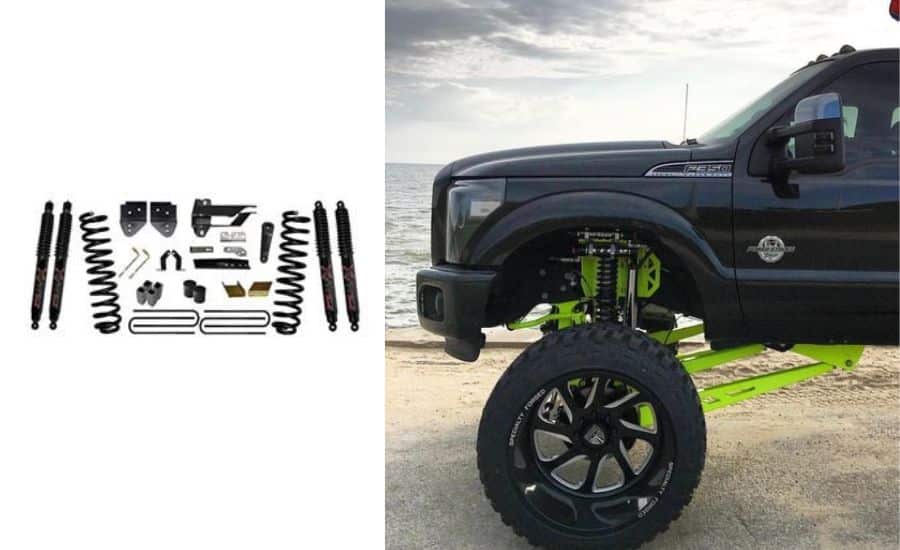
Proper maintenance and safety precautions
Maintaining a lifted truck is crucial for its optimal performance and longevity. Here are some reasons why proper maintenance is essential:
- Safety
Regular maintenance ensures that all components, including suspension, steering, and braking systems, are in good working condition, reducing the risk of accidents or failures while driving.
- Preserving performance
Proper maintenance helps preserve the performance and off-road capabilities of a lifted truck. It ensures that the suspension remains in proper alignment, shocks function correctly, and tires wear evenly.
- Avoiding damage
Lifted trucks are subjected to additional stress due to their modified components.
Routine maintenance helps identify potential issues early on and address them promptly, preventing more extensive and expensive damage.
When working on a lifted truck, it’s vital to prioritize safety. Some important safety precautions to follow include:
- Using proper tools
Utilize the correct tools and equipment for the task at hand to ensure stability, proper fitment, and prevent accidents.
- Following manufacturer guidelines
Adhere to the manufacturer’s instructions and guidelines for maintenance, modifications, and lifting procedures specific to your truck model.
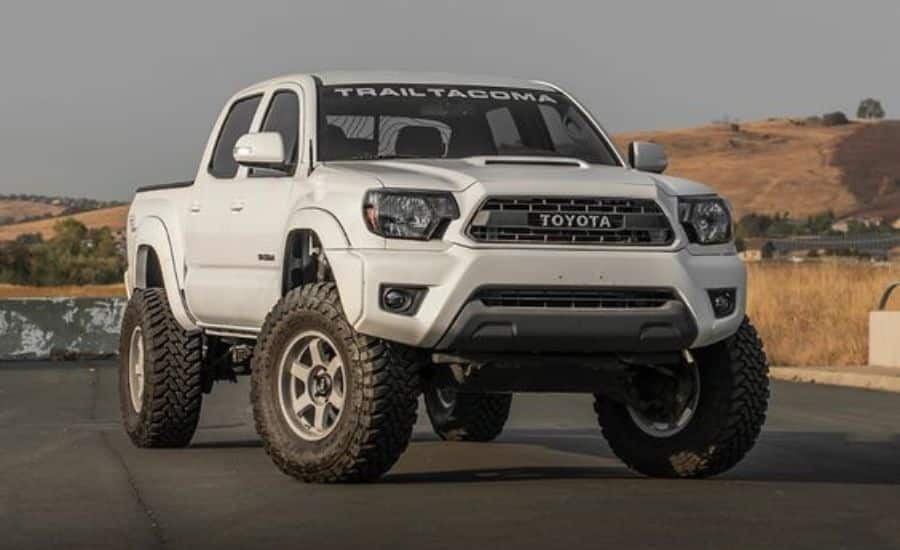
- Professional assistance
Seek professional help or guidance when undertaking complex modifications or repairs beyond your expertise.
- Jacking and supporting
Make sure the rear wheels of a lifted truck are chocked, and the jack points and jack stands are correctly positioned and securely sustain the vehicle’s mass before jacking it up.
- Personal protection
Wear appropriate safety gear, including gloves, safety glasses, and sturdy footwear, to protect yourself from potential hazards.
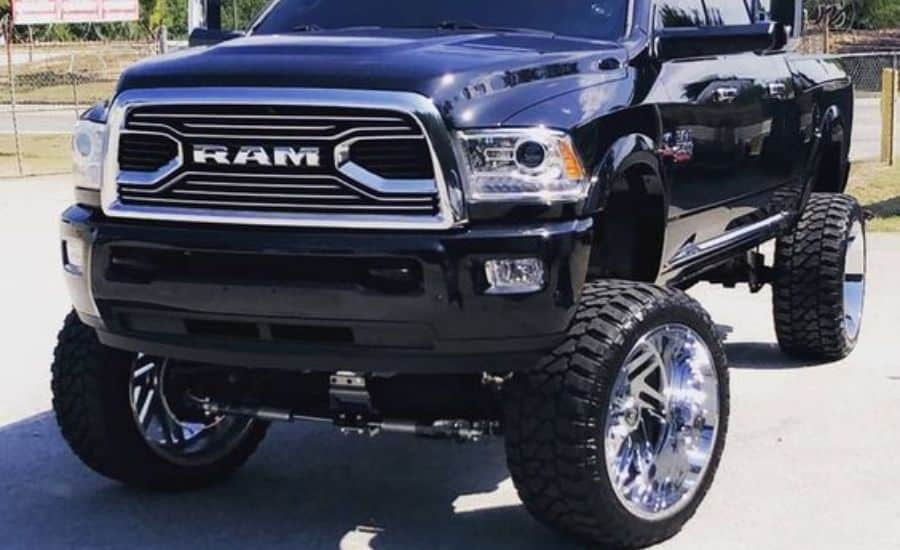
Essential equipment
Prior to jacking up the lifted truck, it’s crucial to gather the essential tools and equipment (like a jack stand) to ensure a safe and successful process.
- Hydraulic jacks or scissor jacks
Invest in a quality jack (like hydraulic jacks/hydraulic trolley jacks) capable of lifting the load of your lifted truck.
Opt for floor jacks that offer an enhanced weight capacity and a wide base for stability (you may employ a trail jack or a hydraulic floor jack).
It is strongly advised to solely utilize a hi-lift jack for emergency situations and recovery purposes while off-roading.
- Jack stand
A jack stand is essential for this process. A reliable jack stand holds the lifted truck after being lifted above the floor.
Verify that the jack stands can support the load of your vehicle. A jack stand should be adjustable to reach the desired height.
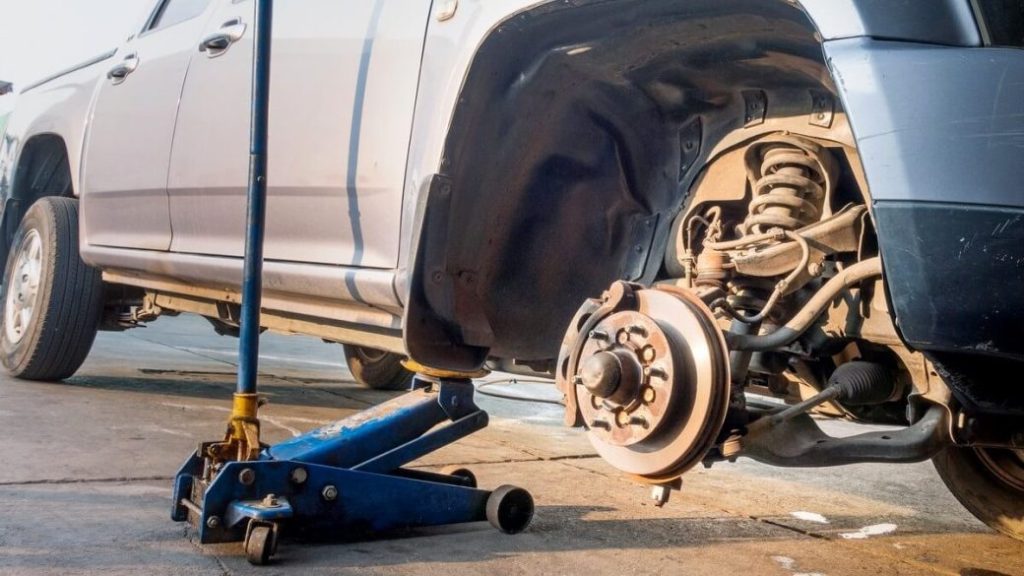
- Wheel chocks
Wheel chocks (especially to chock the rear wheels) are essential for limiting the ability of the lifted truck to roll as it’s being raised.
- Lug wrench
Have a lug wrench on hand to loosen and tighten the lug nuts when removing or installing tires.
- Safety gear
Always prioritize safety when working on a lifted truck. Wear protective gear such as gloves, safety glasses, and sturdy footwear to protect yourself from potential hazards.
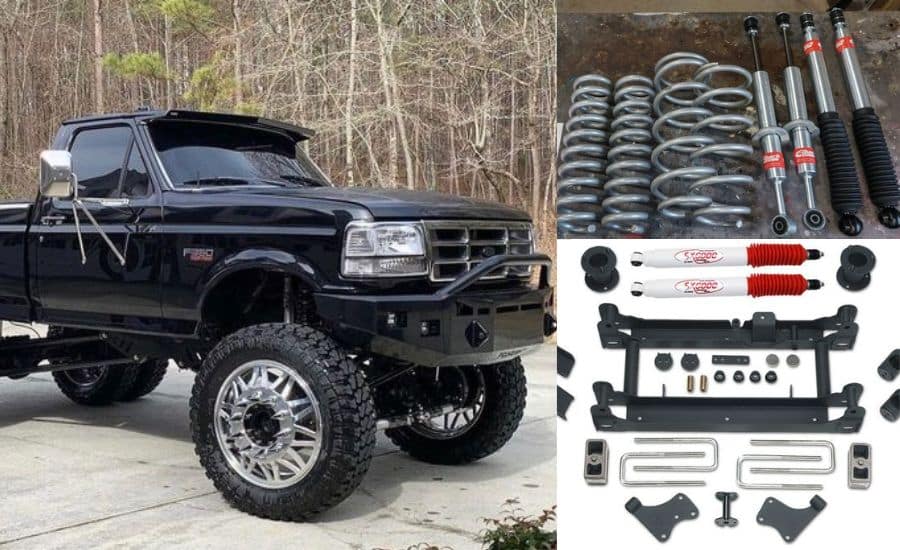
Guide on how to jack up a lifted truck
In this section, we are going to provide a concise, detailed explanation to help you jack up the lifted truck safely.
Getting the work space ready and ensuring safety
Before taking any actions, clean the space around your lifted truck of any obstacles, debris, or potential tripping hazards.
Mark off the workspace to prevent accidental collisions or interference.
Ensure the vehicle is not parked on an inclined or uneven surface, and chock the rear wheels.
Locating jack points and lifting the vehicle
Refer to the vehicle’s owner’s manual or consult with a professional to identify the right jack points on the truck frame or designated lift points (since you shouldn’t set the jack beneath the steering rack, for example).
The two jack points behind the rear wheels and front wheels are specifically designed to handle heavy loads. Jack points guarantee that the vehicle rests securely.
Position the hydraulic jack beneath the two jack points and double-check that it is securely placed.
Pump the jack handle or use the electric controls to gradually lift the vehicle till the front wheels are raised. Raise the vehicle to the desired height.
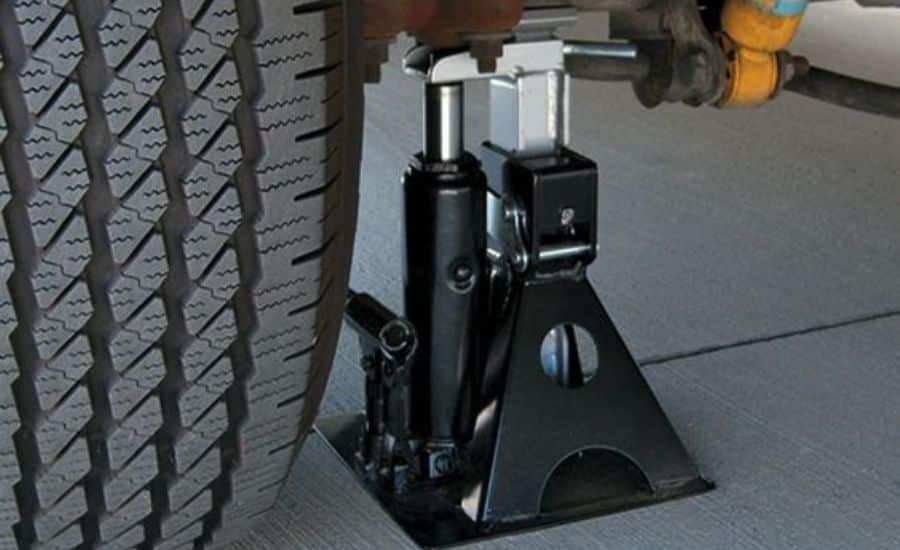
Supporting the lifted truck employing jack stands
Select jack stands that are rated to handle the mass of your lifted truck. Position a jack stand on a stable surface and adjust the height of the jack stand to match the desired level of extra support.
Ensure the jack stands are positioned securely under the designated lift points or the vehicle’s frame.
Descend the vehicle slowly and with caution onto the jack stands by gradually releasing the hydraulic jack.
Double-check to verify that the vehicle is evenly supported by the jack stands and ensure the jack stand is locked in its place.
Performing the desired maintenance or modification
Common maintenance tasks for lifted trucks include tire rotations, changing tires, inspecting suspension components for wear or damage, checking and adjusting the alignment, and maintaining proper lubrication.
These trucks often undergo modifications such as installing aftermarket suspension components, upgrading to larger tires, adding auxiliary lighting, or adjusting the truck’s ride height.
Repairs may involve addressing suspension issues, fixing damaged components, or addressing any modifications that require adjustments or corrections.
Remember, it’s important to follow the manufacturer’s instructions and guidelines for maintenance, modifications, and repairs specific to your truck model.
If you’re uncertain about any aspect of the maintenance or modification process, consider seeking professional assistance or guidance.
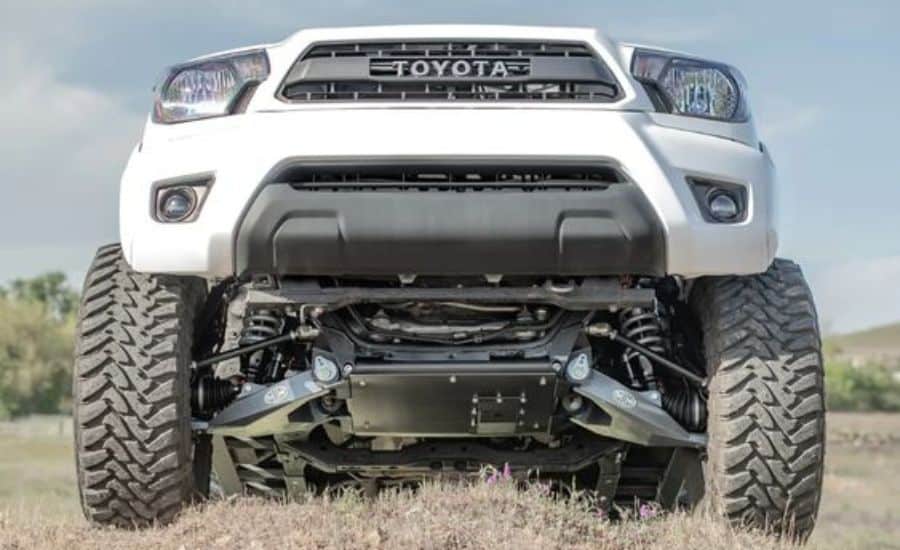
Final words
Jacking up a lifted truck requires proper preparation, the proper tools (like a jack stand), and a focus on safety.
Remember to prioritize regular upkeep to preserve the performance and longevity of the lifted truck.
Following these instructions on how to jack up a lifted truck will help you raise your truck safely.
Read also: How to tell if F150 has max tow package: 4 ways
FAQ
If you wish to jack up a lifted truck, it is important to position the proper jack points on the frame or designated lift points.
Jack points are specifically designed to handle the truck’s weight during lifting.
Refer to the vehicle’s user manual or consult with a professional to identify the correct jack points.
To jack up a lifted truck with high ground clearance, you require a jack stand and a sturdy hydraulic jack that is able to lift the truck’s weight till the front wheels are above the floor.
It is recommended to employ the jack stand with a floor jack with a high weight capacity and a wide base for stability.
Jack stands support the truck with a flat tire when it is lifted above the floor.
No, it is not recommended to use a regular jack to support a lifted load. Regular jacks are designed for lifting vehicles and not intended for extended support.
Instead, it is essential to employ appropriate jack stands to provide stable and secure support for a lifted load.
Jack stands are specifically designed to handle the load and provide a safe working environment.
It is generally not recommended to jack up a truck by the axle unless it is specifically designed and equipped with proper jack points on the axle.
Improper jacking can damage the axle or cause instability, posing a safety risk.
1. Consult the owner’s manual to find jack points. It may include diagrams or jack point descriptions that indicate the jack points for lifting the vehicle.
2. Look for jack point markings or indicators. Some vehicles have jack point markings or indicators on the undercarriage that highlight the jack points.
3. Check for reinforced areas to find a jack point. Jack points are typically located in reinforced areas of the vehicle’s frame or subframe.
4. Observe the suspension components to find a jack point. Jack points are often located near suspension components such as control arms, trailing arms, or subframe connectors.



1 thought on “Lifting your truck: how to jack up a lifted truck”